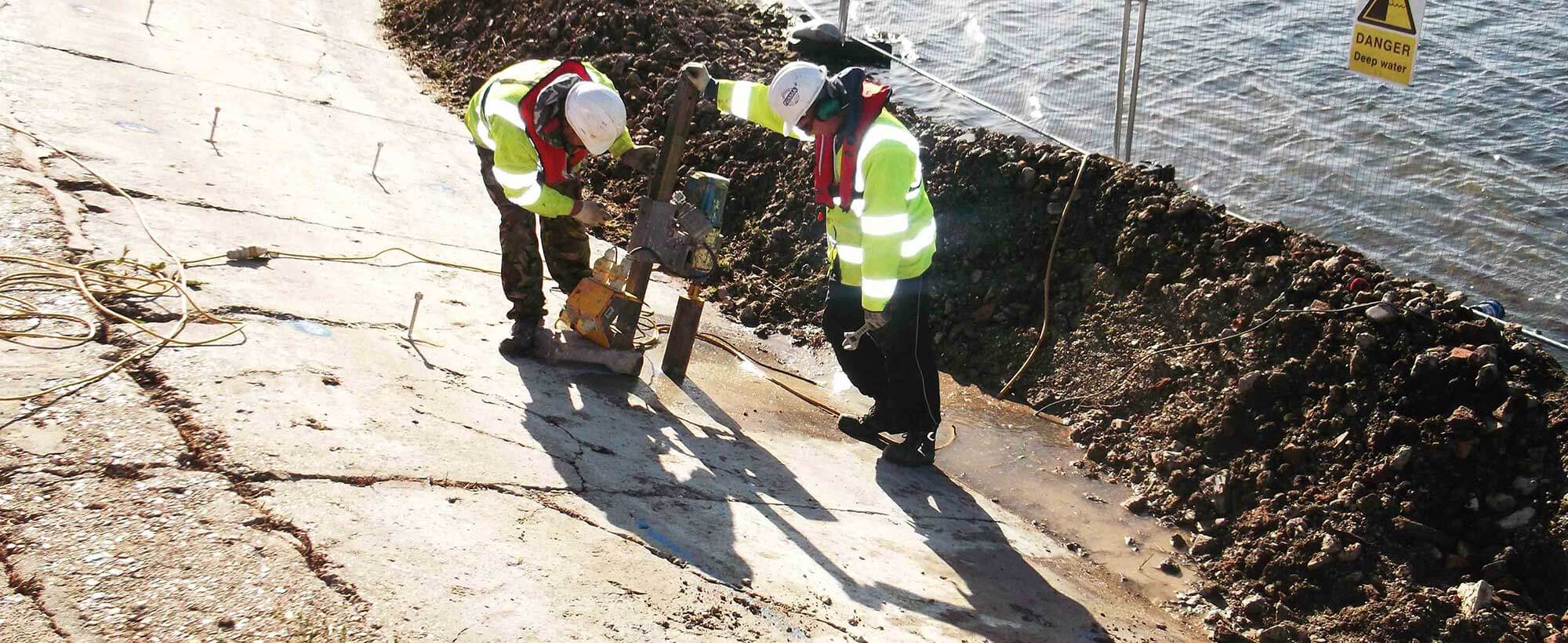

Comparing Diamond Drilling with Reverse Circulation Drilling
Choosing the appropriate drilling methods for the job is extremely essential for obtaining the desired outcome during the exploration and grade control procedures. The decision depends on several factors like cost, time, environmental impact, depth of drilling as well as sample quality. In the drilling realm, Reverse Circulation (RC) drilling and diamond drilling are two methods well sought after to achieve quality results. Let us see how both the prevalent methods of drilling in the exploration industry compare to each other. We shall look into the definition, mechanisms, advantages, and applications of both sides to draw a thorough comparison for your reference.
Defining Diamond Drilling and RC Drilling
Diamond core drilling essentially involves a hollow drill bit that is engraved with industrial-grade diamonds which rotates to bore through rock. This leads to the creation of a solid rock core within the hollow drill which is easy to extract and further examine as per the requirement. The use of diamonds in the machinery makes it ideal for cutting through almost any type of material no matter how hard it is.
Reverse circulation drilling can be defined as the methods that utilize compressed air to create an adequate drilling force. In layman terms, it works through this air hammer that repeatedly pushes into the rock whilst the drill bit at the other end simultaneously rotates. The other part is generally made of tungsten steel. The cuttings created in the process are then extracted, transferred to dedicated tubes, and further analyzed by the experts.
Benefits of Reverse Circulation Drilling
Diving straight into the points of the essence, one of the significant advantages of choosing reverse circulation drilling is that it is easier on the wallet when compared to diamond drilling. The materials and equipment required for the process of diamond drilling can get a little pricey. Certain data demonstrates that reverse circulation drilling costs 25% to 40% less than diamond drilling.
Another major advantage of RC drilling when being compared to diamond drilling is that reverse circulation drilling quite faster and the process takes less time by a wide margin. This trait can be attributed to its high drilling penetration rate. The clients are able to observe results much faster when opting for reverse circulation drilling.
Benefits of Diamond Drilling
While RC drilling offers inexpensive and quick drilling procedures, diamond drilling presents extremely precise drilling outcomes after each and every try. RC drilling is preferred when collecting bulk samples but when talking of accurate sampling and proper analysis of the layers. Diamond drilling extracts a core that is intact where one can obtain smaller rock chips as an outcome after RC drilling. The preference entirely depends upon the kind of job being carried out.
Diamond drilling is also known for achieving greater depths at a time, while this factor acts as a shortcoming for reverse circulation drilling. RC drilling can go up to the depth of 500 meters while diamond drilling can work efficiently up to approximately 1800 meters of depth which provides a rather advantageous edge to diamond drilling in large-scale projects.
Wrapping up
Both the drilling mechanisms prove to be useful in their own terrain. Deciding whether one should opt for reverse circulation drilling or diamond drilling should be done keeping the above-mentioned pointers in mind or Consult an Professional Diamond Drilling Company in London. Sometimes RC drilling is chosen as it works well in areas with water scarcity while diamond drilling proves to be environmentally sensitive and can work its magic on a greater variety of materials when considering the hardness of the substance. As every drilling job differs from the other, analyze the situation thoroughly, and choose the methods that suit the project, in order to guarantee the best, fastest, and safest drilling outcomes.
FAQs
How Diamond Drilling works?
In diamond drilling, a rotary drill with diamond bits is used to obtain precise and clean holes ranging from 8mm to 150mm. This drilling technique is usually implemented in the drilling of hard structures such as asphalt, metal concrete, etc.
What is diamond drilling?
Diamond drilling is a core drilling technique used by professional contractors for creating precisely measured holes using rotary drills with diamond bits. Diamonds are the hardest natural materials and diamond drilling techniques are designed to use their rigorousness to pierce through concrete, metal, asphalt and other materials that are difficult to cut through otherwise.
What is diamond drilling used for?
Diamond drilling is used to create accurate and precise openings in rigid structures. It is used at construction sites and in renovation or partial demolition projects.
How diamond drilling works?
In diamond drilling, an operator uses a rotary drill mounted with industrial-grade diamonds to obtain clean and precise openings in concrete and other rigid structures. Diamond drills can be operated horizontally as well as in a vertical direction depending on the project requirement.
What does a diamond driller do?
A diamond driller is a trained professional who is skilled in operating special equipment such as diamond drills. They are proficient in creating precise openings on a building site or cutting through rough surfaces in a demolition project, using diamond drills.
What is diamond drilling in construction?
Diamond drilling is a versatile method of drilling that can be used in a wide variety of construction projects. It is used to create precise and smooth holes in hard surfaces such as concrete,asphalt etc.
- Search
- Categories
- Archives
